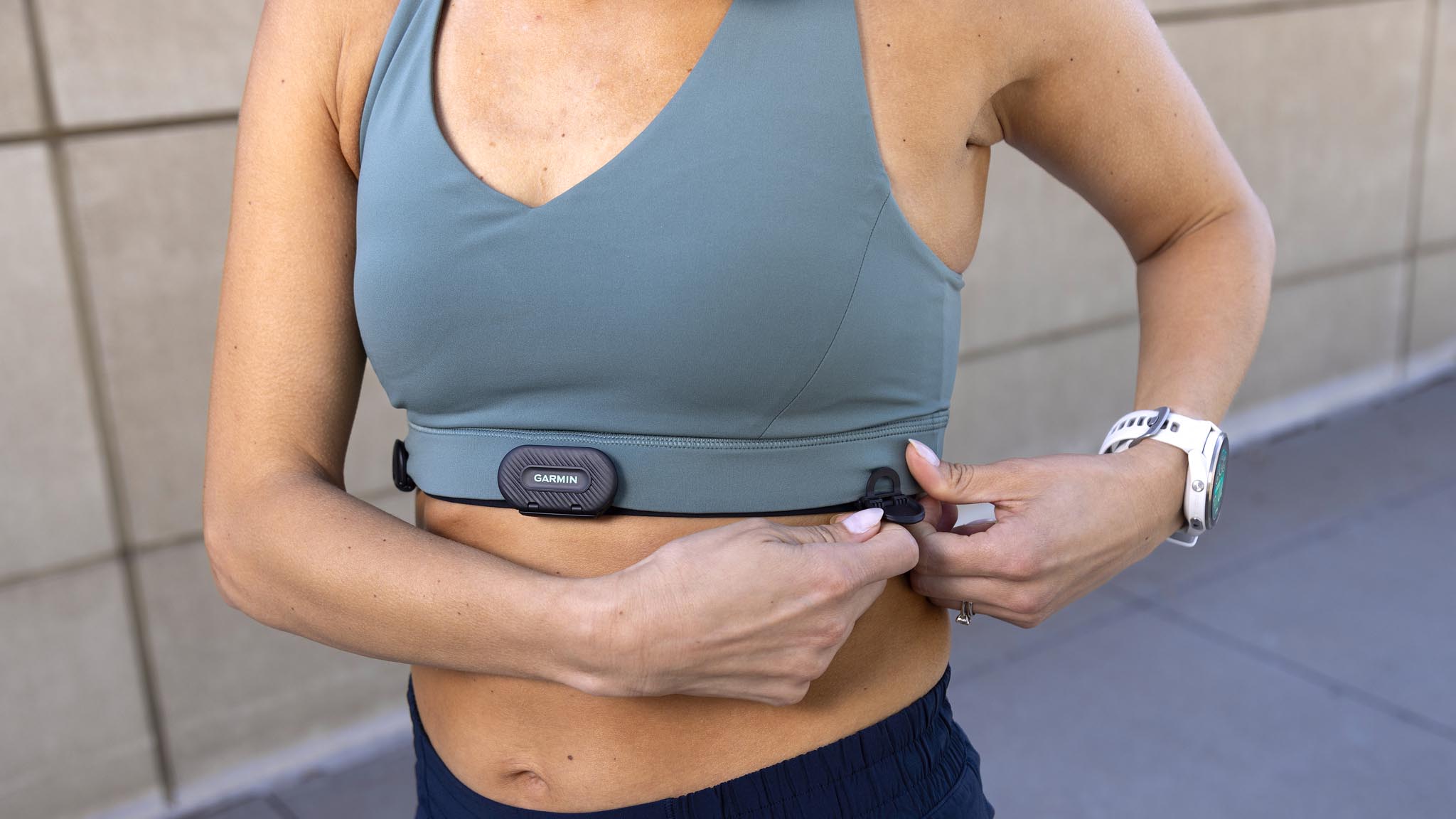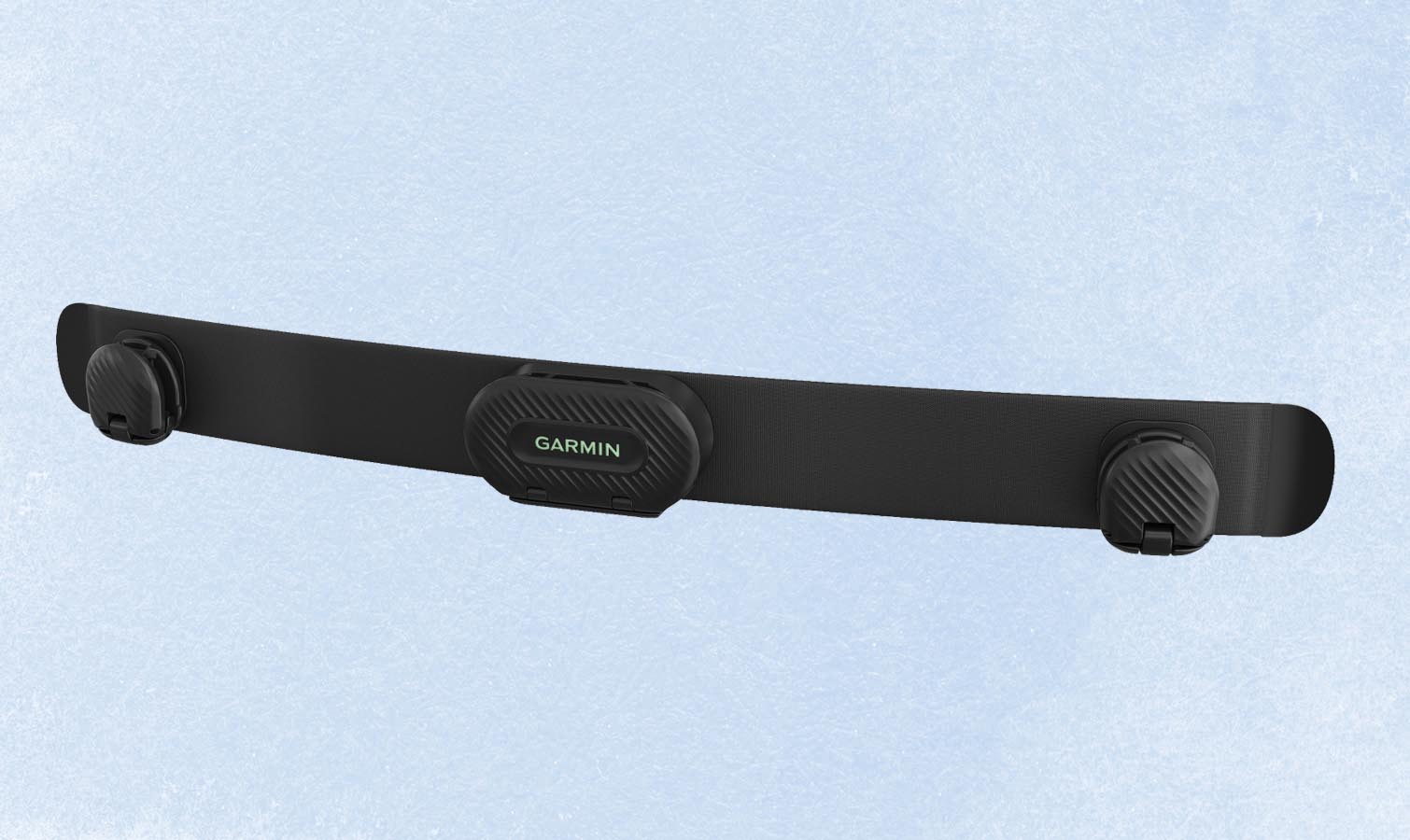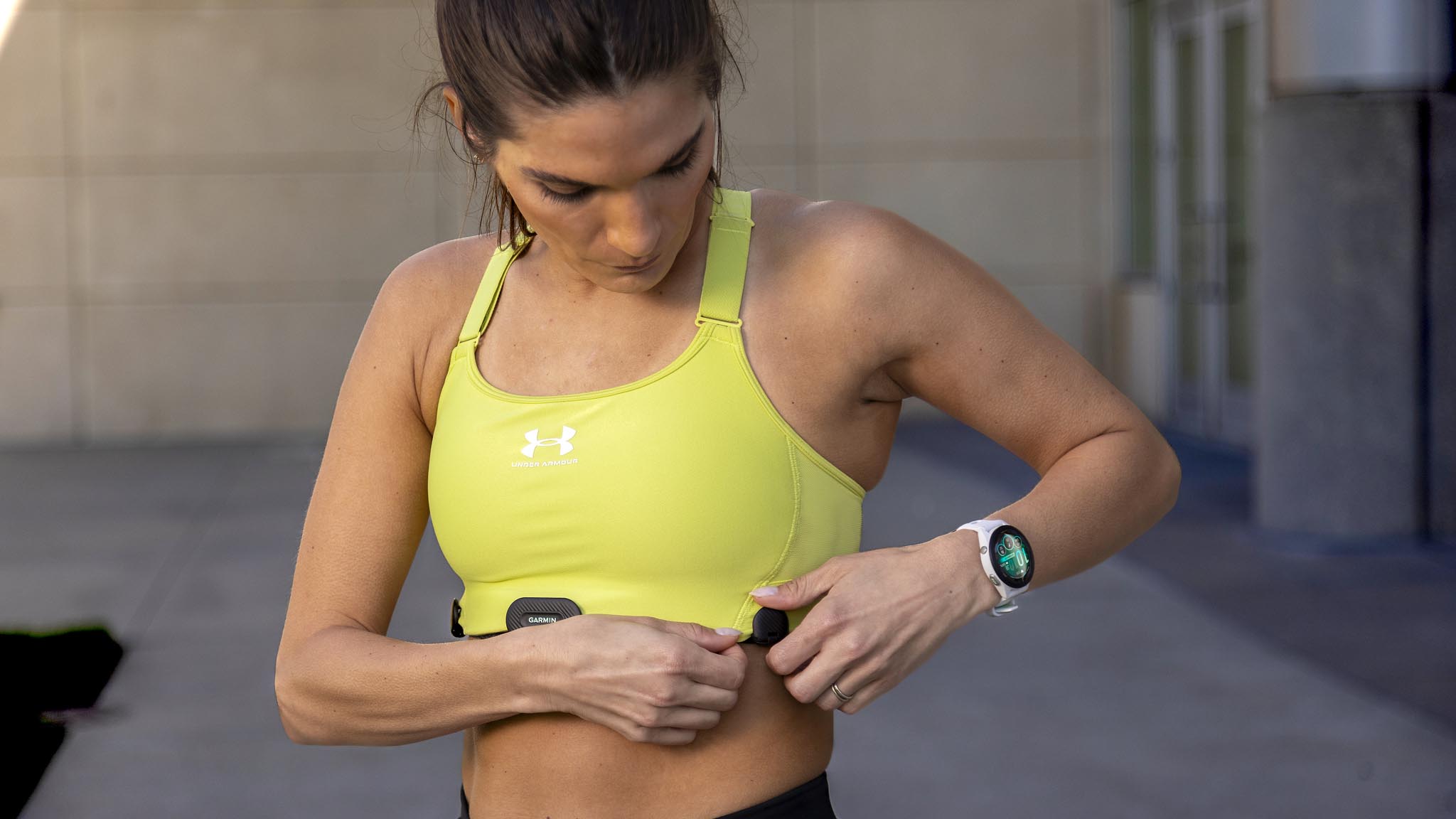
If you’ve ever tried to wear a chest heart rate monitor and a sports bra, you’ll know the struggle that Garmin has tried to solve with this product. I’ve finished countless runs with my heart rate monitor around my stomach, rather than my chest, so I was excited to test the new Garmin HRM-Fit — Garmin’s newest heart rate monitor, designed for women.
Unlike your classic chest strap, this one attaches to the chest band of your sports bra, for a secure fit, and accurate readings. Plus, it neatly integrates with many of the best Garmin watches to comprehensively track your workouts.
But how does it compare to some of the other heart rate monitors on the market, and why would you invest in this over an arm-based heart rate monitor? To find out more, I strapped the chest strap to my sports bra and got testing — read my Garmin HRM-Fit review below to find out more.
Garmin HRM-Fit review: Price and availability
Garmin announced its HRM-Fit heart rate monitor at CES 2024, and it is now widely available from Garmin directly, as well as from third-party retailers. The HRM-Fit heart rate monitor costs $149.99/£139.99. The monitor itself has a battery life of a year and connects with most newer Garmin sports watches — including some of the best Garmin watches you can get right now.
For this test, I connected the Garmin HRM-Fit with my Garmin Forerunner 265, and had no issue. If you don’t have a Garmin watch, you’ll need to download the Garmin Connect app (free on Android and iOS) to view your heart rate data. You can also use the HRM-Fit chest strap with other equipment, such as a treadmill in your gym, or a Peloton exercise bike.
Garmin HRM-Fit review: Design and fit
The Garmin HRM-Fit is designed to attach to most high-impact sports bras. During testing, I used the heart rate monitor with a number of different styles of bra, and the only issue I encountered was getting it to fit comfortably with a bra that had a front zip opening, as the zip prevented the monitor clip from being able to fully close.
On most of the best running bras, however, the HRM-Fit monitor can be clipped onto the chest band using the three clips. Once it’s in place, the heart rate monitor doesn’t budge, and I didn’t have any issue with chafing with the monitor during testing — a problem I frequently had when wearing other chest straps tucked underneath my bra strap.

Like sports bras, you don’t want your heart rate monitor to move when you’re wearing it. Not only can this cause uncomfortable chafing, but it means the data recorded won’t be as accurately.
The three snap clips on the Garmin HRM-Fit allow you to securely fasten the strap to your bra, with the sensors sitting in place on the skin. I’d recommend attaching the heart rate monitor after putting the bra on, as it can be fiddly wiggling into the bra once it’s in place.
I also found it easiest to attach the middle clip first, then the two side ones, to ensure the monitor was lying flat.

The device itself contains a battery, which Garmin says has enough power to record a year’s worth of workouts. When you open the clip, you’ll see a little battery compartment, which you can easily open with a coin, or a screwdriver, when you do need to replace the battery.
Unlike other heart rate monitors, you can’t wear the HRM-Fit for swimming — it only has a water resistance rating of 3ATM, which means it’s fine for sweat and rain showers but shouldn’t be submerged in water. Instead, Garmin makes a HRM-Pro heart rate monitor which can be worn in the pool.
The monitor itself weighs 53g/1.8 ounces, so it’s not that noticeable once it’s in place. However, if you’re self-conscious, or you prefer to wear tighter layers when on the run or in the gym, you can see the bumps on the monitor through your top.
Garmin HRM-Fit review: Performance
To test the Garmin HRM-Fit, I wore it for a number of different workouts with my Garmin Forerunner 265, my Oura Ring Generation 3 and the Apple Watch Series 9 around my wrist, and looked at the data from all of the different trackers.
Chest heart rate monitors are often more accurate than wrist-based heart monitors, as the former uses electrical detection to track your heart rate. Like many of the most popular chest straps, the HRM-Fit sensors needed to be slightly damp against the skin for accurate measurements.
One of the benefits of using the HRM-Fit over wrist-based heart rate monitors is that it offers extended metrics to Garmin users. These include indoor pace and distance, Garmin running dynamics, and the ability to capture data if you’re not wearing your watch. Plus, you can connect the HRM-Fit with three different devices via Bluetooth.

During my testing, I found the results of the HRM-Fit to be pretty much spot on. The HRM-Fit read my heart rate as slightly higher than the Apple Watch Series 9, but the two units were in agreement when it came to my overall average heart rate.
Obviously when it comes to more advanced running metrics, however, the HRM-Fit comes into it’s own. If you practice sports that don’t allow you to wear a running watch or fitness tracker, the device is a handy way to record advanced metrics.
Garmin HRM-Fit review: Verdict
The Garmin HRM-Fit is a fantastic fitness tracker for women — it’s easy to connect to third-party devices like the Peloton Bike Plus, and was simple to set up and download data. The advanced running dynamics it records are handy for those looking to get a deeper insight into their training.
When it comes to the design and build, the HRM-Fit is excellent. It fit well and didn’t budge during exercise. It was comfy to wear during workouts, and, unlike traditional heart rate monitor chest straps, it didn’t cause any chafing.
Of course, not every runner will need to wear a chest strap — it’s an expensive piece of kit, and these days, most Garmin watches can record advanced running metrics. That said, if you’re looking to improve the accuracy of your indoor runs and workouts, this is one of the top heart rate chest straps on the market for women.







